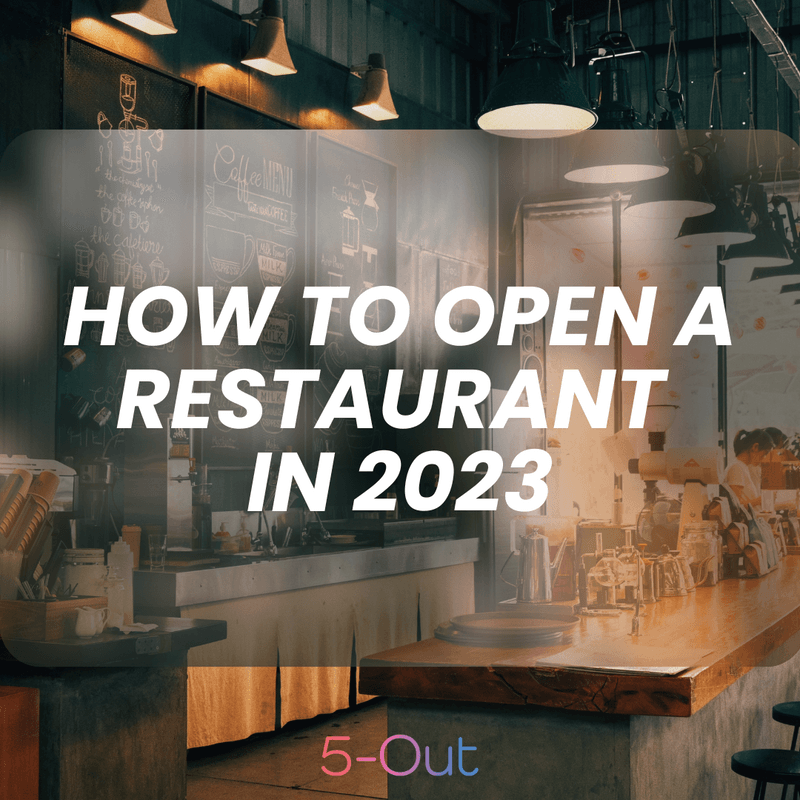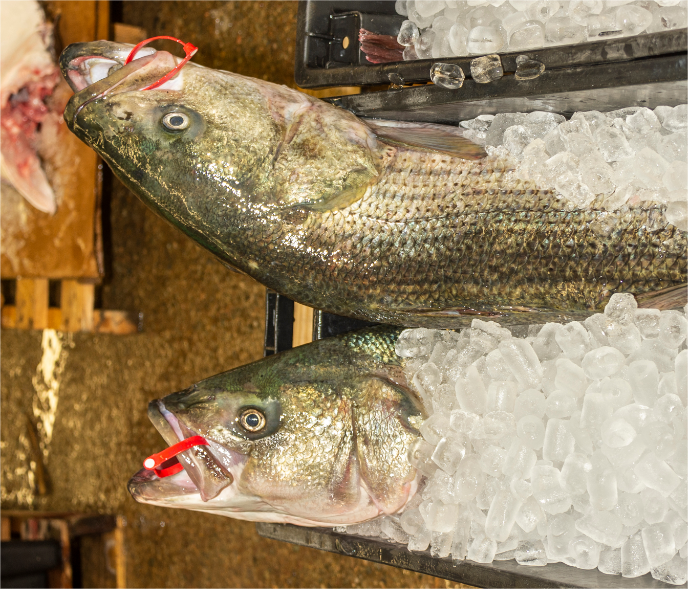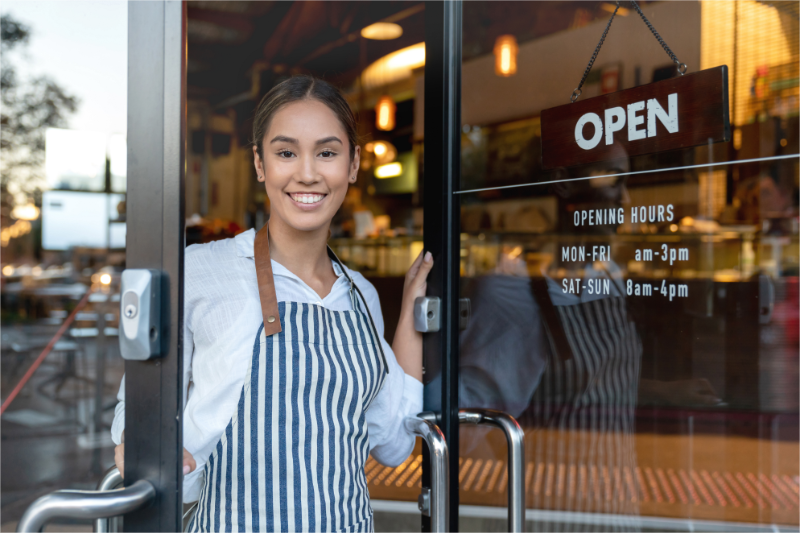Step-by-Step on How to Open a Restaurant in 2023
- Erin Watkins

- Sep 25, 2023
- 10 min read
Discover how to open a restaurant in 2023 within 8 essential steps, from choosing the right concept to tackling potential challenges.
Restaurant Industry

As we step into 2023, the prospect to start a restaurant brims with intriguing opportunities. However, turning your restaurant idea into a thriving business venture requires more than just culinary expertise; it necessitates a deep understanding of evolving dining preferences and practices. In this dynamic landscape, where dining trends continuously evolve, and consumers seek diverse culinary experiences to fit varying moods, occasions, and budgets, the lines between tradition and innovation are increasingly blurred.
This blog addresses a central inquiry: How to successfully open a restaurant in 2023? To achieve this, it's essential to discern not just the transient dining scene but also to choose the right type of restaurant that aligns with the current demands. We guide you through carving out your restaurant's distinct persona, constructing a resilient business plan, pinpointing the prime dining location, and fortifying vendor ties. Beyond these, we venture into pivotal areas like understanding restaurant expenses, leveraging small business administration aid, and comprehending your business line, ensuring your restaurant venture stands resilient in the vibrant gastronomic domain.

Step 1: Choosing the Right Restaurant Concept
Embarking on the restaurant journey in 2023 demands both a profound grasp of the target market and a crystallized vision for your establishment. Your chosen concept serves as the foundational framework, influencing everything from the restaurant menu to the ambiance and the clientele you'll attract. While the concept sets the stage for the overall dining experience, it's distinct from restaurant branding, which is about shaping perceptions and creating a unique identity in the minds of diners.
Gastronomic Experiences vs. Fast Casual Dining
Gastronomic experiences tantalize the senses with curated tastes and intricate presentations, offering an escape into culinary artistry. In contrast, fast-casual establishments cater to today's dynamic lifestyles, providing authentic flavors without elaborate settings.
Ethnic and Fusion Cuisines
Globalization has turned local diners into global gourmands. While ethnic cuisines transport them to foreign lands with each bite, fusion menus blend these global traditions, resulting in novel, delightful creations.
Theme and Ambience
A meal is more than just food—it's an experience. The ambiance, from decor to music, has the power to amplify this experience, making it either memorable or forgettable.

Step 2: Crafting a Robust Business Plan
Behind every successful restaurant lies meticulous planning and a strategic vision. As you transition from the conceptual phase, creating a solid business plan becomes paramount. This business plan will not only guide your initial steps but will also be the roadmap for your brand's future growth and adaptation.
Purpose and Objectives
A restaurant's identity stems from its vision, mission, and objectives. These foundational pillars dictate the direction and ethos of the brand, setting it apart in a competitive landscape.
Understanding the Market Landscape
Knowledge is power. A comprehensive market analysis provides insights into your competition and highlights the needs and desires of your potential clientele. Armed with this knowledge, you can position your restaurant effectively.
Projections and Investments
Financial foresight, bolstered by strategic planning, safeguards the realization of your restaurant dream, preventing it from succumbing to unforeseen pressures. Precise projections and a deep understanding of revenue streams are pivotal, especially when considering startup costs. These projections are the cornerstone of securing a small business loan, helping you cover initial expenses and account for recurring financial commitments, paving the way for a profitable and sustainable venture.
Operational Strategy
Operational efficiency is the backbone of any restaurant, crucial for maintaining low operating costs. By laying out clear strategies—from daily logistics to future scalability—you ensure that the business runs smoothly and is prepared for both opportunities and challenges.

Step 3: Identifying the Ideal Location
Choosing the right spot for your restaurant can be a game-changer. The restaurant location is much more than just a physical space—it represents accessibility for your customers, visibility in a crowded market, and can even influence the mood and theme of your establishment. As you scout for the perfect location for your 2023 venture, here are key factors to ponder upon.
Using Demographics and Traffic Patterns for Decision-making
Location intelligence is crucial. Understanding the demographics of an area can provide insights into potential customer profiles and their dining preferences. Are they young professionals looking for quick bites or families seeking relaxed dining? Pair this with an analysis of traffic patterns. High footfall areas or those with good transportation links can automatically boost your restaurant's visibility and accessibility, driving in more customers.
Rent, Accessibility, and Profitability
Every location comes with a price tag. While prime locales might demand higher rents, they might also promise better footfall and visibility. It's essential to strike a balance. Consider not just the immediate rent but also other costs like utilities, maintenance, and any potential renovations required. Accessibility for suppliers, parking facilities for customers, and potential profitability based on the location's advantages and challenges, should all play a role in your decision-making process. Remember, a seemingly cheaper location that's inaccessible can cost more in the long run in terms of lost potential revenue.

Step 4: Establishing Solid Vendor and Supplier Relationships
Behind every successful restaurant lies a network of trusted vendors and suppliers, ensuring the seamless flow of ingredients, restaurant equipment, and other essentials. These relationships are foundational, impacting not only the quality of the food served but also the overall efficiency and profitability of the establishment. In the dynamic culinary landscape of 2023, understanding how to nurture and maintain these collaborations is more critical than ever.
Selecting Partners Aligned with Your Concept
Your restaurant's concept and vision should be mirrored in every dish that's served, and that begins with the ingredients you use. It's crucial to partner with suppliers who understand and resonate with your brand ethos. If you're opening an organic, farm-to-table bistro, for instance, you'll need vendors who can provide fresh, local, and chemical-free produce consistently. Research potential partners, seek referrals, and prioritize those who have a proven track record in your specific niche. A shared vision can go a long way in ensuring long-term collaboration and success.
Negotiating Terms and Ensuring Consistent Quality
While price negotiations are a given, discussions with vendors shouldn't just be about costs. Dive deep into delivery schedules, the freshness of goods, contingency plans for supply disruptions, and quality assurance protocols. Regularly review the products you receive, ensuring they meet the agreed-upon standards. Building trust and open communication channels with your suppliers means that in times of unexpected challenges, you're more likely to receive support and flexibility. Remember, consistency is king in the restaurant business, and your vendor relationships play a significant role in achieving that.

Step 5: Embracing Restaurant Tech Innovations
The restaurant industry, like many others, has been revolutionized by technological advancements. In 2023, tech isn't just an add-on—it's a vital component of daily operations, shaping customer experiences and optimizing back-end processes. Leveraging the right tools can significantly enhance efficiency, profitability, and adaptability in an ever-changing culinary landscape.
Implementing Efficient POS Systems
The Point-of-Sale (POS) system acts as the nerve center of your restaurant's operations. Modern POS systems are more than just cash registers—they integrate sales, inventory, and customer management. By adopting an intuitive and comprehensive POS, you can ensure smoother transactions, track sales in real-time, and manage inventory more effectively, reducing wastage and associated costs.
Digital Menus, Online Bookings, and Contactless Payments
In the digital age, customer experiences begin even before they step into the restaurant. Digital menus, complete with vibrant images and detailed descriptions, can entice customers and help them pre-plan their orders. Online reservations ensure that patrons can secure their spots without a fuss. Furthermore, contactless payments, which surged in popularity due to health considerations, offer speed and safety, streamlining the payment process while enhancing customer comfort.
Utilizing Data Analytics for Business Strategy
Every transaction, every customer feedback, and every click on your website provides valuable data. Implementing data analytics tools can help decode this information, offering insights into customer preferences, peak business hours, popular dishes, and more. Such insights can guide menu modifications, promotional strategies, and even staff scheduling, ensuring decisions are data-driven and optimized for success.
Sales Forecasting
In the volatile world of the restaurant business, anticipating future trends can give you a distinct edge. Sales forecasting tools, powered by AI and machine learning, analyze past sales data, factor in external variables like holidays, local events, or even weather forecasts, and provide predictions for future sales. This forecasting assists in inventory management, staffing decisions, and financial planning, reducing inefficiencies and enhancing profitability.
5-Out: AI-Driven Sales Forecasting Tool for Restaurants
In the dynamic and competitive restaurant industry, staying ahead of the curve requires not just culinary excellence but also the mastery of data-driven decision-making. To optimize profits, streamline operations, and enhance customer experiences, we highly recommend the use of 5-Out advanced AI-driven sales forecasting tool that integrates seamlessly into your restaurant's operations.
Advanced Data Analytics: 5-Out harnesses the power of advanced data analytics to provide real-time insights into your restaurant's performance. It not only analyzes historical sales data but also incorporates a wide array of external factors, including weather conditions, local traffic patterns, and holiday calendars, allowing for precise demand predictions.
Real-Time Inventory Insights: Maintaining the right balance of inventory is a perpetual challenge. 5-Out addresses this by providing real-time inventory insights based on predicted demand. This ensures you're neither overstocked nor underprepared, resulting in reduced waste and optimized purchasing.
Labor Scheduling Optimization: Efficient staff scheduling can significantly impact your bottom line. 5-Out's AI algorithms take into account forecasted demand patterns, enabling you to optimize labor schedules, reduce overstaffing during lulls, and ensure you have the right number of hands on deck during peak hours.
Seamless Integration: Implementation of 5-Out is a breeze. It seamlessly integrates with your existing restaurant management systems, saving you time and resources on complex setups.
Why Choose 5-Out?
Proven Track Record: 5-Out has a proven track record of delivering substantial improvements in sales accuracy and cost optimization for restaurants of all sizes.
User-Friendly Interface: Its user-friendly interface makes it accessible to restaurant owners and managers with varying degrees of technical expertise.
Continuous Improvement: 5-Out is not a static tool; it continuously evolves and refines its algorithms to adapt to changing market dynamics, ensuring your restaurant stays competitive.
5-Out is the quintessential AI-driven sales forecasting tool for restaurants, offering unparalleled accuracy, real-time insights, and seamless integration. Harnessing the power of data analytics and AI, it empowers you to make informed decisions that drive profitability while enhancing the overall dining experience for your patrons. Elevate your restaurant's operations and embrace the future of dining with 5-Out!

Step 6: Prioritizing Safety, Health, and Compliance
The importance of health, safety, and regulatory compliance in the restaurant industry can't be overstated. Especially in the wake of the global pandemic, these considerations have shot to the forefront of both patrons' and restaurateurs' minds. A commitment to stringent standards not only ensures the well-being of all stakeholders but also fosters trust, loyalty, and brand reputation in an increasingly discerning market.
Staying Updated with Health and Safety Standards
As the restaurant landscape evolves, so do the health and safety regulations and business license requirements governing it. This entails regular reviews of guidelines from health departments, food safety regulations, and industry bodies. Implementing the latest best practices, be it in food handling, storage, or preparation, ensures compliance and minimizes risks associated with foodborne illnesses or other safety hazards.
Continuous Training for Staff
Restaurant employee training shouldn't be viewed as a singular event. In a landscape marked by shifting regulations and ever-evolving best practices, the need for ongoing education is paramount. It's imperative that every member of your team, from the kitchen brigade to the front-of-house personnel, partake in regular training initiatives. This includes mastering hygiene standards, practicing emergency response drills, and adhering to guidelines for customer interactions, particularly regarding allergen information and specific dietary needs. Beyond efficiency, a thoroughly trained staff plays a pivotal role in cementing the restaurant's reputation for safety and utmost professionalism.

Step 7: Ready for Restaurant Openings
Launching your restaurant is akin to opening the curtain on a captivating culinary performance. It's a carefully orchestrated event that can set the tone for your establishment's journey.
The Soft Launch
A soft opening is like a dress rehearsal before the big show. It's an opportunity to fine-tune your operations, train your staff, and iron out any wrinkles in your processes. During this phase, invite a select group of friends, family, or even loyal customers to dine at your restaurant. Encourage honest feedback and use it to make last-minute adjustments. A soft launch not only helps you ensure a smoother grand opening but also generates buzz and anticipation in your community.
The Grand Opening
The grand opening is your restaurant's red-carpet moment. It's the occasion to introduce your establishment to the public with flair and panache. Plan a memorable event that reflects your restaurant's concept and values. Consider hosting tastings, live music, or special promotions to draw in the crowds. Invest in eye-catching decorations and a welcoming ambiance. The grand opening is your chance to make a lasting first impression.
Strategic Marketing
No restaurant opening is complete without a strategic social media marketing plan. Leverage the power of digital marketing, social media, and local advertising to spread the word. Create enticing promotions or exclusive offers for the grand opening to attract curious diners. Engage with food bloggers and influencers to generate online buzz. Consistency is key; ensure that your branding and messaging are consistent across all platforms. Post-launch, continue your restaurant marketing efforts to keep the momentum going.
Step 8: Navigating Potential Business Challenges
Every entrepreneurial journey, including that of opening and running a restaurant, is fraught with challenges. While the allure of the culinary world is undeniable, behind the scenes, restaurateurs grapple with myriad obstacles, from financial crunches to fluctuating consumer preferences. However, foresight, strategic planning, and adaptability can transform these hurdles into opportunities for growth and learning in the vibrant landscape of 2023.
Anticipating and Mitigating Financial Risks
Financial volatility is inherent in the restaurant sector. To thrive, securing a business line of credit or a loan through the US Small Business Administration (SBA) is vital. Regularly reassess your costs and explore diverse revenue streams like catering or merchandise. Having tailored insurance and a contingency plan attracts potential investors and safeguards against unpredictable downturns.
Strategies for Long-term Staff Retention
A restaurant's success isn't just about the food or ambiance—it's also about the people who bring the vision to life. High staff turnover can be a significant drain, both financially and in terms of service consistency. Prioritize a healthy work culture, offering competitive wages, benefits, and opportunities for growth. Regular training, open communication channels, and a sense of belonging can go a long way in ensuring that your team sees a future with your establishment.
Adapting to Changing Consumer Tastes and Trends
The culinary world is dynamic, with tastes, preferences, and trends evolving constantly. Staying attuned to these shifts ensures your restaurant remains relevant and appealing. This might mean regularly updating your menu, introducing seasonal specialties, or even completely revamping your restaurant's theme. Engage with your patrons, solicit feedback, and stay abreast of industry developments. Remember, flexibility and a willingness to innovate are the keys to longevity in the restaurant business.
In conclusion, owning your own restaurant in 2023 offers an array of exciting opportunities for small business owners. As you navigate the dynamic culinary landscape, remember that success lies in understanding evolving dining preferences, championing sustainability, embracing technology, and navigating potential challenges. Your restaurant isn't just a place to dine; it's an opportunity to create memorable experiences, connect with patrons, and turn your culinary passion into a thriving venture. With dedication and innovation, you're well-prepared to embark on the rewarding journey of owning and managing your own restaurant.
Ready to make your restaurant dream a reality? Discover the power of 5-Out sales forecasting and unlock your culinary success!



Comments